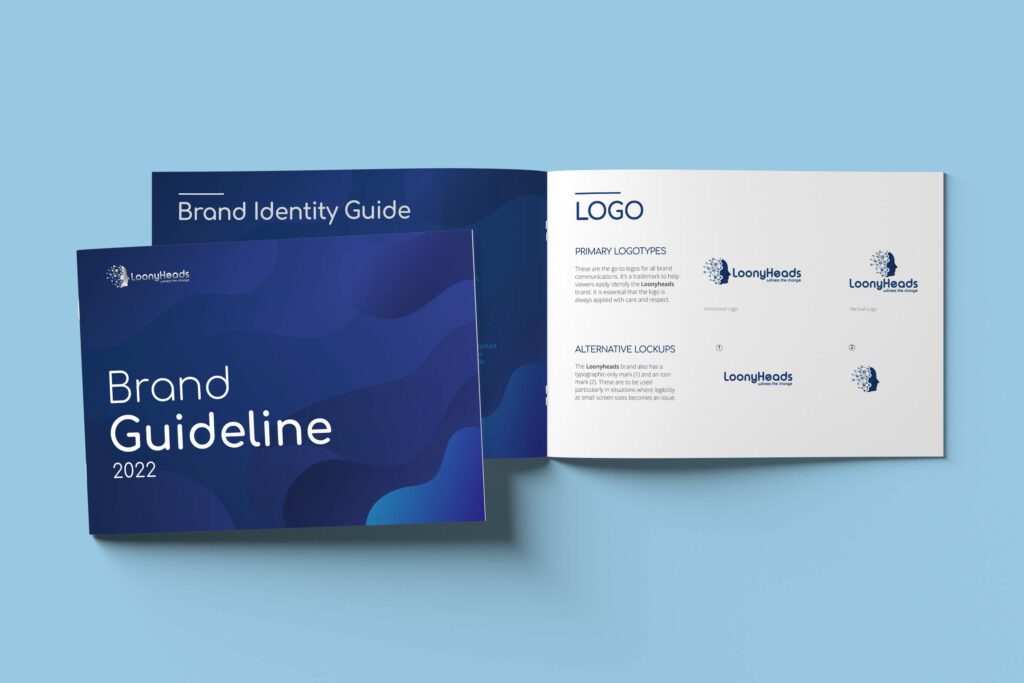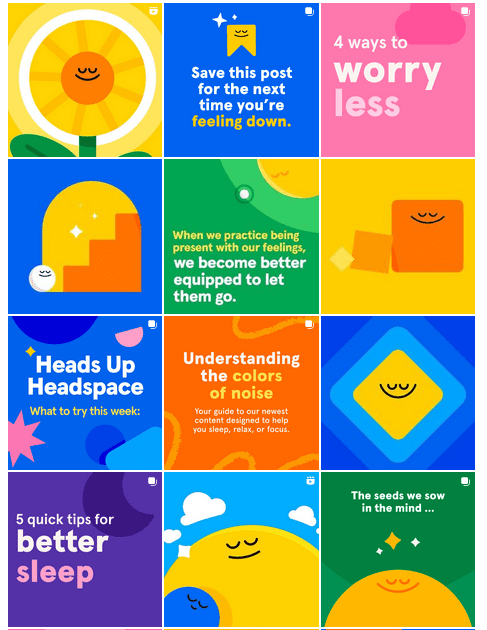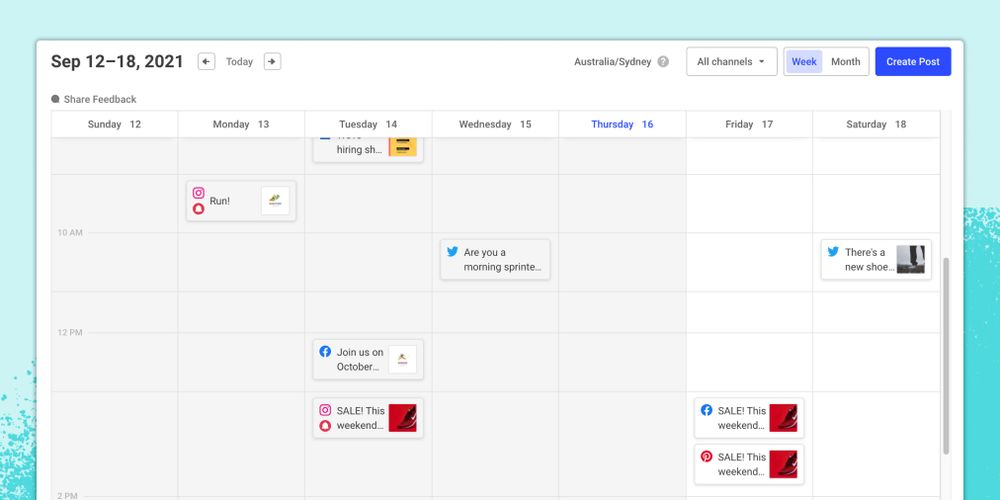Content Creation: 5 Tips To Streamline Your Process
In marketing, content is king! Need we say more? Yet, it is the importance of content creation that makes it a dreaded task in marketing. So, how can you tackle this common hurdle? How can you effectively streamline your content creation process? The solution lies in a blend of strong content creation strategies and the prowess of AI/automation.

From engaging blog posts that put your website at the top of the search results to social media posts that expand your reach, high-quality content comes in various shapes and sizes. And to ace the digital platform, you need to focus on most of these content types. With the pressure mounting and expectations increasing every day, automation and adaptive content strategies can keep you ahead in your game.
Wondering where to begin? Why not start with an understanding of why content holds a pivotal position in marketing? After that, we’ll get to our topic of streamlining your content creation process.
The crucial role of content in marketing
Based on studies by the Content Marketing Institute, content marketing holds a critical place in marketing according to 70% of B2C marketers and 73% of B2B marketers. In essence, regardless of your business type or target audience, content remains an undeniable marketing cornerstone. Here’s why:
- Did you know that websites with blogs have about 434% more indexed pages than those without? This means that content (blogs, in this case) enhances the search visibility of your business.
- Quality content helps in lead generation. Data shows that content marketing brings about 3 times more leads than most traditional marketing strategies.
- The worth of the content marketing industry is projected to reach $900 billion by the year 2028. Global marketers are fervently investing in content marketing, and your competitors are no exception. Therefore, staying ahead in your content game is non-negotiable.
- Cost can be a deciding factor especially when you are operating on a limited marketing budget for your business. Keeping this in mind, the fact that content marketing costs nearly 62% less than several conventional outbound marketing strategies is worth remembering.
- Building customer loyalty is one area several businesses struggle with. Quality content can help you in that area. In fact, about 52% of marketers consider content marketing to be a critical component in building customer loyalty.
This is just a glimpse of the endless benefits that content brings to marketing. To make the most of these benefits, you need a strong content marketing plan. Since content creation is the most important step in this, let’s talk about that.
Tips to streamline content creation
1. Have a clear strategy for your marketing content
With content creation, sailing in unchartered waters results in a wasted marketing budget. In other words, if you do not have clearly defined objectives and strategies for your content creation process, you would be spending a lot of time and money without seeing concrete results. Content that does not convert is of no use to your business, after all!
The real question here is – how do you define the right strategy for content creation?
- Understand your target audience. The content you create will not bring any positive results to your brand if you do not optimize it for your target audience. It should speak their language and answer their questions.
- Start by identifying your core business objectives and campaign-specific objectives. Which of these should the content communicate with your audience? For example, if you observe Nike’s social media content closely, you’ll notice one solid objective in the picture – empowering the audience. Whether it is video posts or static images or carousels, Nike comes up with content that empowers and inspires its social media followers. This unified messaging works in favor of the brand.
As you can see, coming up with a strategic content creation plan involves understanding your goals and your audience. And with the strategy in place, you can then work on how to tackle the actual content creation part.
2. Work on your brand guidelines
The foundational component in streamlining your content creation is your brand guideline or brand style guide. This is a comprehensive document that captures all the essential information required to visually or textually represent your brand on various occasions, consistently. In other words, brand guidelines are essential to ensure the consistent presentation of your brand in front of your customers.
Therefore, when it comes to streamlining content creation, designing and maintaining clear brand guidelines is a mandatory step. This ensures that content in all formats speak in the same tone and deliver a unified message that aligns with what your brand stands for.
The below image shows brand guidelines designed by KIMP. As you can see several details about the brand are documented in the brand guidelines. These include logo do’s and don’ts, variations of the logo, brand tone of voice, and other nuances. Therefore, brand guidelines ensure that all your content cohesively represents your brand as it is.

3. Create and use templates wherever possible
You can improve the efficiency of your content workflow and save some time by creating templates of various types.
A template defines a structure or format for different types of content. Templates combined with your brand guidelines will help content creators including those working on your SEO content like blogs and graphic designers working on your brand visuals understand your requirements and relay them better in your content.
Templates are useful to delegate content creation tasks to internal teams or outsource them. Because with the templates in place, you have a clearly defined starting point for content creation and the assurance that the key details in your content are intact.
For example, the below image shows a snapshot of the Instagram page of Headspace.
Do you notice a pattern? Take the “4 ways to worry less” and “5 quick tips for better sleep” carousels for example. As you can see, from the font used to the placement of the text and the size and color, there are many cohesive elements in these two posts. With all these in place, it is easier for the content creation team to work on the copy and the design. Moreover, it is also easier for the users to understand that there is a series of posts with a similar purpose.
Similarly, when you are working on your blogs, a template would define the basic structure like word count, number of images or subheadings to use, etc.
KIMP Tip: Templates come in handy to create a consistent aesthetic for your YouTube channel as well. This can include a standard Thumbnail template for your channel and video templates with intro and outro.
Need help designing short intro and outro videos for your brand and thumbnail designs too? Get a KIMP Graphics + Video subscription.
4. Pay attention to your content calendar
A content calendar is exactly what the term implies – a chronological document that tells what content will be published on what platform and on what date. Content calendars can be prepared on a monthly or quarterly basis depending on the frequency of posting your content.
Whether you have the same content calendar for all your content types like social media posts, blogs, and newsletters or a different one for each depends on factors like:
- The size of your organization
- The structure of teams working on your content
- And the goals and audience to keep in mind
The below image shows the content calendar that you can create and track with Buffer, a well-known social media toolkit for small businesses.
Similarly, your content calendar gives a snapshot of the types of content that will be posted on behalf of your brand in order to expand your brand visibility and nurture continuous engagement.
Let’s talk about some tips to help you make the most of content calendars for organized content creation.
- Incorporate social media analytics and use data from the performance of your previously published content to decide factors like frequency of posting and content formats to focus on.
- Define timelines for content creation and posting schedules in your content calendar so as to keep track of the progress and avoid last-minute delays.
- Collaborate with all the stakeholders like the social media manager, content strategist, content creator, graphic designer, and others. This helps in coming up with a more practical plan with realistic timelines.
- If you are stuck, you can always choose the ready-to-use content calendar templates available online for inspiration.
5. Make the most of AI and automation
Automating your content creation process helps save time and ensures that you do not miss the right windows of opportunities for engaging with your audience. There are various content automation strategies and tools you can leverage to optimize your content workflow. We’ll talk about a few of these tools in the next section.
But before that, let’s quickly discuss some ways in which you can capitalize on the automation of your content creation process:
- Automate content creation – with tools like ChatGPT and Copy.ai you can quickly create the copy for your social media post or the outline for your blog posts in seconds.
- Social media scheduling tools ensure that your content goes live at the optimal times when your audience is most likely to be online and therefore increase the engagement on your posts.
Similarly, there are endless options in tools that can be used to streamline your content creation process. Want to know more about them and their applications? Let’s go.
Tools to help improve the productivity of your content creation process
1. Canva
With pre-designed templates and endless design choices, Canva comes in handy for convenient promotional graphics design. To further elevate your Canva design process you can also collaborate with professional Canva designers.
2. Unlimited design subscription
An unlimited design subscription is one of the easiest ways to automate the creation of visual content for your brand. From branding designs like business cards to promotional print designs like flyers, and promotional digital designs like web ads and social media posts, all your design needs will be taken care of in one place. So, all it takes is to give your design brief and brand guidelines and your designated design team will deliver your designs on time.
3. Buffer
Buffer provides tools to plan, collaborate and publish your content, analyze your social media pages and identify the content gaps, and track engagement. Hence it lets you take your social media management to the next level.
3. CoSchedule
CoSchedule has a comprehensive Marketing Suite that lets you visualize your schedules, manage creative workflows, and keep track of your marketing strategy. Additionally, there are also standalone tools like Marketing Content Calendar and Social Calendar for specific tasks.
4. ChatGPT
This generative AI tool comes in handy at various stages of the content creation workflow. For example, ChatGPT can be used in the ideation process to come up with topic ideas for blog posts based on the specified parameters like niche, and target audience. It can also be used to proofread content, generate ideas for social media post captions, and more.
5. BuzzSumo
While the tool can take care of various marketing tasks, the most useful ones include Content Discovery, Content Research, and Monitoring. Once you have the insights ready you can also identify influencers and then work on your content for influencer campaigns.
6. Ahrefs
Ahrefs is a comprehensive tool to track your SEO performance. The Site Explorer option helps you monitor and draw inspiration from your competitor’s keywords and backlinks. With the Site Audit tool, you can easily find existing SEO issues and resolve them. The Content Explorer and Keywords Explorer features help in planning and creating SEO content for your website.
7. Zapier
Zapier is one tool that helps in the complete automation of various workflows in your organization. It can also be used to mindfully connect your content workflow to the rest of your marketing processes. In addition to this, Zapier can be used in many ways – from connecting various apps to automating specific tasks, triggering workflows to gathering insights.
8. HubSpot
This versatile CRM platform can also be used to connect your content workflow with the rest of your internal processes. Furthermore, content management, social media management, and tracking can all be organized in one place.
9. Mailchimp
With a range of content creation tools, marketing templates, audience management features, email-building tools, and campaign management options Mailchimp helps you make the most of the content you create for your brand.
10. Jasper.ai
This AI-based tool can help with ideating your campaigns, creating content based on the defined brand voice, and even generating art for inspiration.
Automate your visual content workflow with KIMP
As we briefly discussed in the previous section, one of the most effective ways to streamline the creation of visual content for your brand is to choose an unlimited design subscription. Because, with this, you get unlimited designs at a flat monthly fee. And your designs are worked on by the designated design team while you focus on other content creation tasks. Want to know how this works? Set up a call with the KIMP team for a one-on-one demo.

